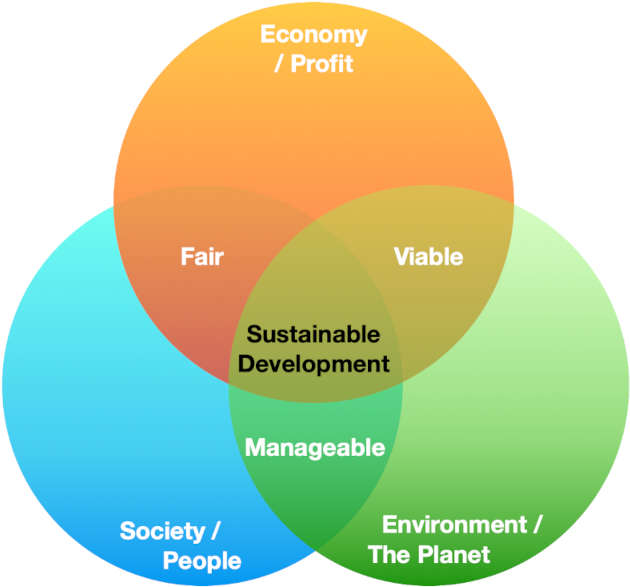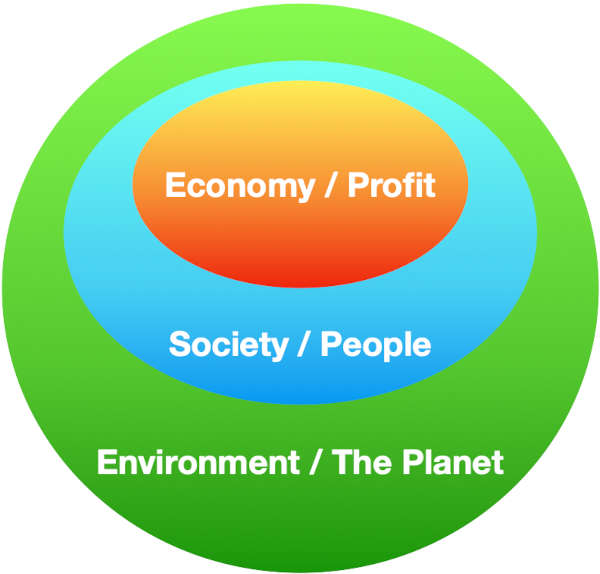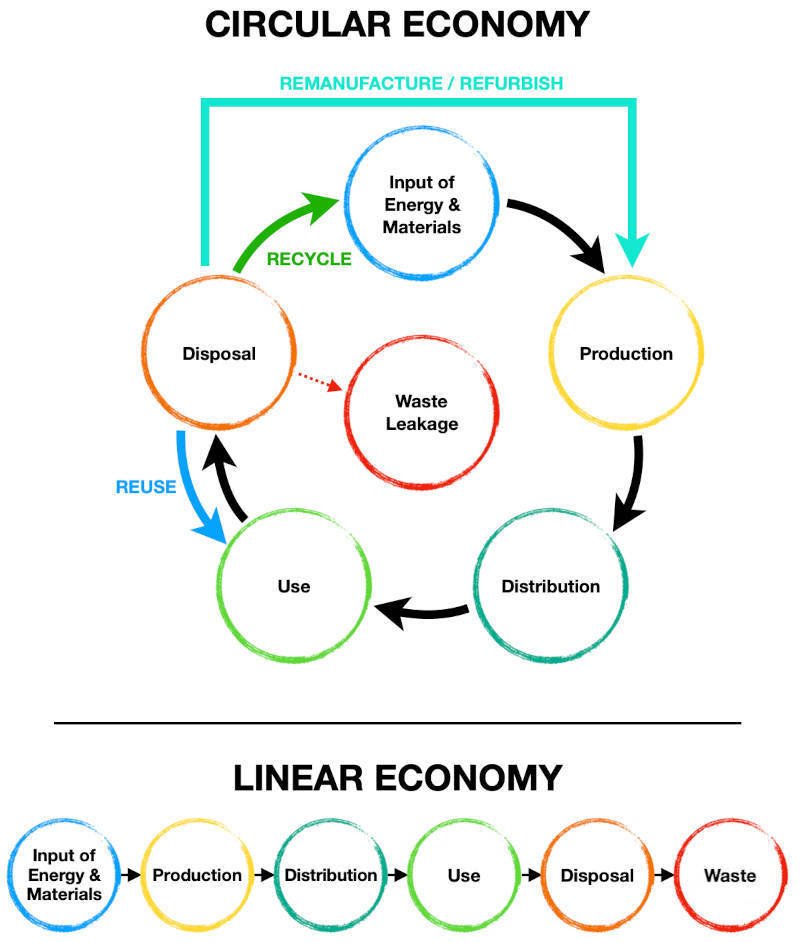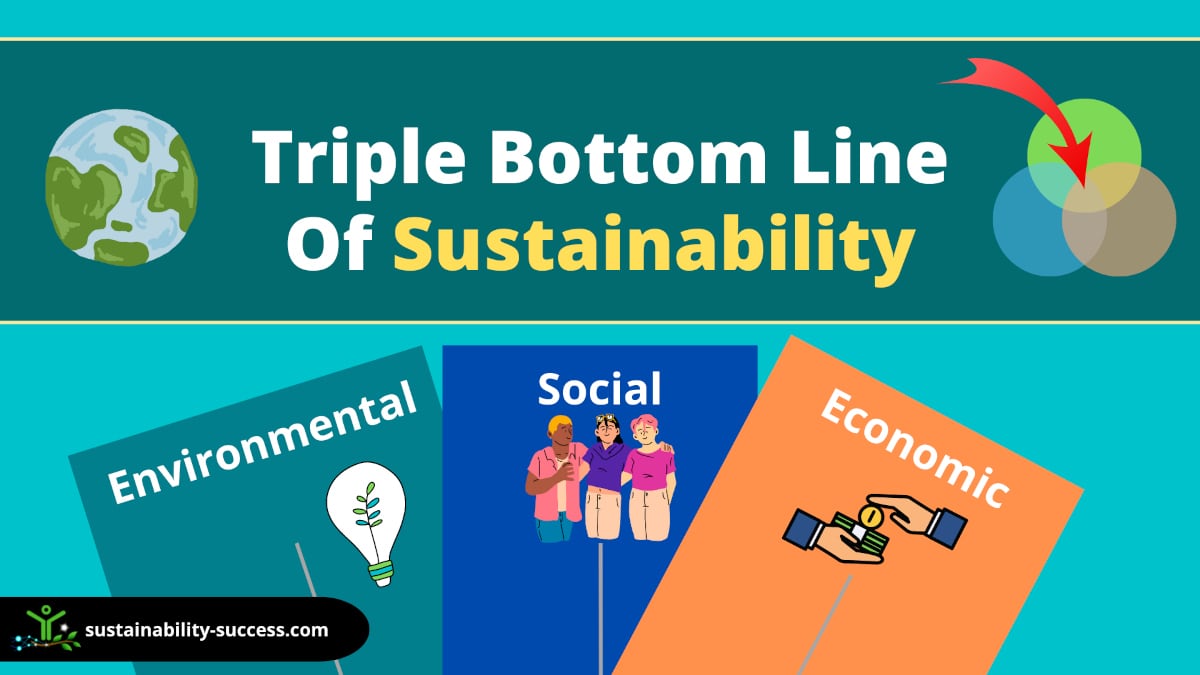Sustainability may often be interpreted as just environmental sustainability, however, it is much more than that. The triple bottom line of sustainability (TBL model) is the fundamental framework to understand sustainable development!
Key Takeaways
- The triple bottom line includes environmental, social, and economic aspects.
- It’s a framework for assessing an organization’s sustainability performance.
- Encourages balanced consideration of profit, people, and the planet.
The “triple bottom line” (TBL) is a term that captures sustainability’s three central pillars: environmental protection, social justice, and economic development. This is also important because is a framework to measure sustainability.
The TBL of sustainability was first mentioned in the Brundtland report in 1987. Sustainable development is built on top of those 3 principles because it can be achieved only when environmental protection, social equity, and economic profitability coexist without one area taking over any of the others.
The term triple bottom line is used to express the concept that to achieve sustainable development in businesses. Companies should in fact have 3 balance sheets: economic, environmental, and social.
As you can see, the financial balance sheet is only one of the 3 bottom lines that should be considered to have a truly sustainable business.
According to this definition, the 3 balance sheets of sustainable development are seen as interacting with each other at the same level. While sustainable development resides at the intersection of the 3.

More recently, this framework was also outlined by the United Nations Millennium Declaration and as of today, this represents the most popular model to evaluate and understand sustainable development.
A more sophisticated interpretation is recognizing that the three components of the triple bottom line are not all at the same level, but there is a hierarchy. The economy is contained in the society, and the society is contained inside the environment.

The triple bottom line is also known as the 3 pillars of sustainability, the 3 Ps, or 3 E’s of sustainability. Moreover, there is also a different version of this model that is based on 4 pillars, where more importance is given to human factors.
1. The Environmental balance Sheet

The environmental dimension of sustainability is crucially important. After all, we have to make sure that we’re leaving the planet in a better state than we found it. That means measuring our environmental performance and making sure that we’re having a positive impact.
Environmental performance metrics
Environmental performance metrics like greenhouse gas emissions, water and energy use, waste generation, and land use help assess the ecological impact of companies, sectors, or economies.
These measures are vital for businesses to be environmentally accountable, leading to the concept of an environmental balance sheet.
The environmental bottom line, alongside economic and ecological management strategies. It involves actions to mitigate environmental impacts and promote sustainability, focusing on conserving natural resources and enhancing ecosystem resilience against human-induced disturbances.
Managing demand
The other approach is to manage the demand side of resources coming from human activities. This involves things such as:
- Energy consumption: incentivizing the migration towards renewable sources and improving efficiency.
- Waste management: moving away from a linear model (where the materials end up in a landfill) and promoting a circular path, where recycling is used as much as possible to harness its benefits.
- Food: promoting more healthy and sustainable diets, such as the Mediterranean or Japanese diets, that make less use of animal products.
- Freshwater: efficiency is improved by upgrading infrastructure and using new technologies, especially in agriculture. Managing also the demand side, by educating the public on the use of this precious and limited resource.
- Reducing CO2 emissions: by making extensive use of renewable sources, improving efficiency, and upgrading to new technologies.
- Population: statistics demonstrate that most of the world’s population growth is coming from the poorest areas of the planet. While the population of the richest nations remains mostly stagnant or in slight decline. Promoting equality and better living conditions for the poor is not only ethical, but it can also contribute to reducing the global growth of the population.
- Cities: proper planning of the urban spaces and infrastructure can help to achieve more sustainable lifestyles.
The Social balance Sheet

The social bottom line includes initiatives, public policies, planning, and regulations that support social issues such as fighting poverty, social justice, peace, promoting diversity, quality of living, access to healthcare, education, community development, cultural heritage, and some aspects of religion.
The social dimension of sustainability is the least understood compared to the economic and ecological dimensions. However, it is clear that the social factor influences all human activities, and is therefore strongly linked to the economic and ecological dimensions of sustainability and sustainable development.
More in detail, the main aspects of this type of sustainability are:
- Peace, security, and human rights are very important components of social sustainability, this is because wars, crime, and unethical practices are not only wasting valuable resources in destructive activities but are also ultimately bad for the environment. Just think about all the pollutants dispersed into the environment during wars or from factories using unethical practices.
- Access to healthcare is a central point of the social principle. Many health-related issues are interconnected with the environment and economic aspects in general. For example, in agriculture, green improvements are also helping to improve health-related conditions. Finally, the World Health Organization is going as far as considering sustainability impossible to achieve without taking care also of health-related issues.
- Poverty and social justice: poverty and lack of social justice are also not allowing societies to make long-term plans, ultimately reducing human well-being while also hurting the environment.
- Influence of religion and culture: cultural sustainability deals with beliefs, religion, and heritage conservation. Cultural aspects are without a doubt one of the drivers that can help to enable sustainable development. In this respect, recent years saw some important contributions on the religious side that helped to attract more attention to the topic: with both the Dalai Lama and Pope Francis calling for more responsibility in fighting ecological degradation and preserving the ecosystems.
social performance of a business
Companies can boost social performance by enacting equitable policies, such as granting all employees the same number of paid sick days, which reduces inequality and ensures fair treatment for all staff members.
Additionally, enhancing employee well-being through benefits like free gym memberships and promoting inclusion with equal vacation days are crucial steps in fostering a healthy, inclusive workplace culture.
The Economic balance Sheet

The economic dimension of sustainability is about measuring the economic performance of a firm or society in order to ensure long-term viability. In other words, it is the standard financial accounting.
Gross Domestic Product (GDP) is the predominant metric for gauging a country’s economic output, representing the total value of all goods and services produced annually.
While GDP is widely utilized, other indicators like profit, earnings per share, market share, sales, and market capitalization also provide valuable insights into economic performance.
Exploring a range of economic measures offers a comprehensive view of a firm’s or society’s economic health, enabling more nuanced decision-making for sustaining long-term economic growth and stability.
economic Sustainability for businesses
Sustainable business goes beyond profitability, integrating economic viability with social and environmental considerations is key. This balanced approach is essential for long-term sustainability, considering the planet’s finite resources and the limitations of growth-focused economic models.
Incorporating sustainability into business practices is increasingly recognized, driven by heightened environmental awareness and regulatory measures. This shift is fostering innovative, eco-conscious business strategies that improve operational efficiency and brand perception without escalating costs, marking a new era of responsible corporate leadership.
What is the circular economy?

The circular economy is a sustainability-focused economic model that encourages sharing, repairing, refurbishing, reusing, and recycling to maximize product usage and minimize waste. It contrasts with the linear economy by creating a system where products are designed to be durable, easily repairable, and recyclable, thus extending their life cycle and reducing environmental impact.
This model transforms products into services, advocating for usage over ownership, and emphasizes a circular supply chain where resources are continuously reused. The aim is to establish a closed-loop system, significantly reducing waste and conserving resources, contrasting sharply with the traditional, wasteful linear economy.
Criticism of the circular economy concept
Critics of the circular economy argue it doesn’t fully depart from the linear model, may not effectively reduce new goods production, and could conflict with thermodynamic principles, suggesting it might not be the ultimate solution to sustainability challenges.
Common criticisms of the circular economic model:
- Continues to focus on economic growth without addressing linear model flaws.
- Corvellec, and Hervé (2019): Considers waste as a failure, overlooking its inevitability.
- Geyer and Zink (2017): Doubts about recycling’s impact on reducing new production.
- Korhonen, Jouni; Honkasalo, Antero; Seppälä, Jyri (2018): Complete 100% recycling may defy the second law of thermodynamics.
Sustainable development goals and the tBL

The triple bottom line of sustainability is important and relevant because the UN Sustainable Development Goals (SDG) are based on them. In fact, the SDG goals can also be categorized according to the three bottom lines.
Here are the sustainable development goals aggregated according to the triple bottom line of sustainability:
- ENVIRONMENTAL:
- SDG 12: Responsible consumption and production
- SDG 13: Climate action
- SDG 14: Life below water
- SDG 15: Life on land
- SOCIAL:
- SGD 1: No poverty
- SDG 2: Zero hunger
- SDG 3: Good health and well-being
- SDG 4: Quality education
- SDG 5: Gender equality
- SDG 6: Clean water and sanitation
- SDG 10: Reduced inequalities
- SDG 11: Sustainable cities and communities
- SDG 16: Peace, justice, and strong institutions
- ECONOMIC:
- SDG 7: Affordable and clean energy
- SDG 8: Decent work and economic growth
- SDG 9: Industry innovation and infrastructure
- SDG 17: Partnerships for the goals
Certifications based on the triple bottom line of sustainability
The triple bottom line of sustainability has been used as a guide to define several common standards and certifications. These include Fairtrade, the Rainforest Alliance, GLOBALG.A.P., and UTZ Certified, spanning sectors such as agriculture, fisheries, forest management, and mining operations.
Those certifications are playing an important role not only in measuring objectively the adherence to sustainable business practices, but also in communicating to the consumer which items are sustainably manufactured or produced.
sustainability and ESG
ESG (Environmental, Social, and Governance) is a standard where investors assess companies’ sustainability efforts across three areas, reflecting the triple bottom line of sustainability: environmental, social, and economic.
This comprehensive evaluation extends beyond financials to include factors like gender diversity, carbon emissions, and leadership commitments to sustainability, influencing investment decisions and particularly impacting green technology startups seeking funding from institutional investors.
Conclusions
The triple balance sheet model can be used to evaluate the long-term sustainability of anything. It is important to check if the three bottom lines are in balance or if one of them is too dominant. Because to achieve sustainability, all three principles must be satisfied.

